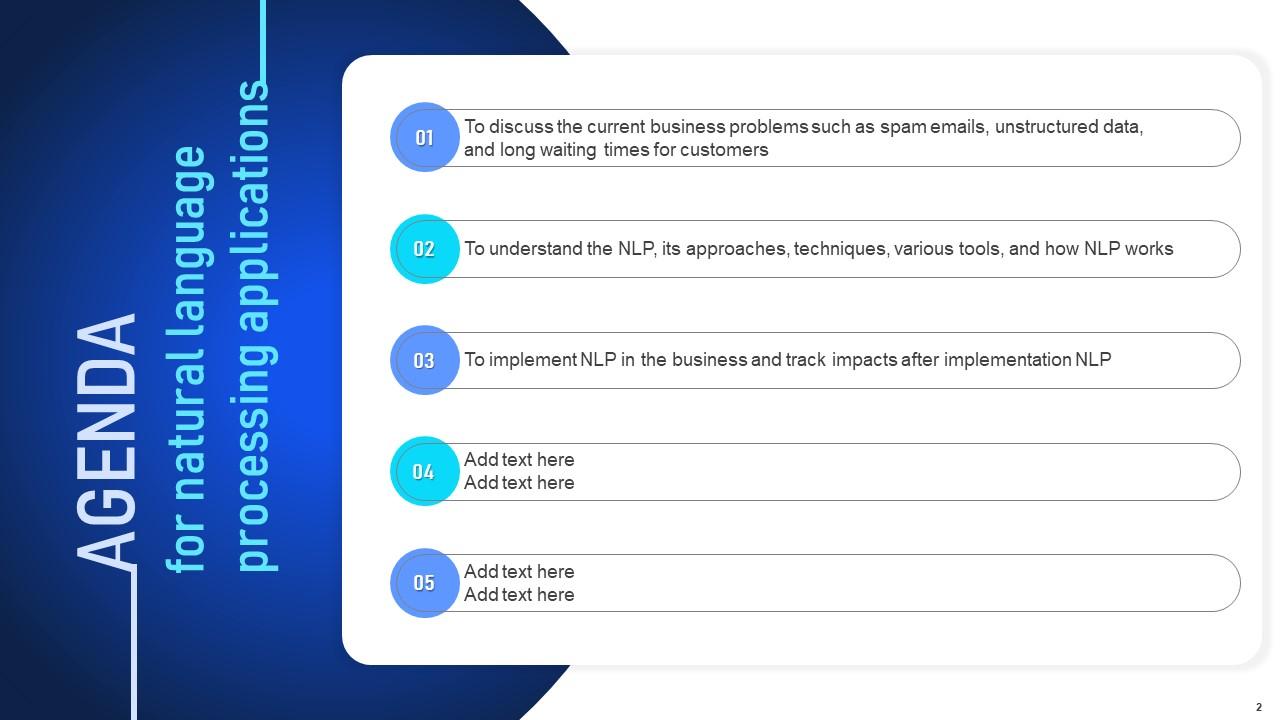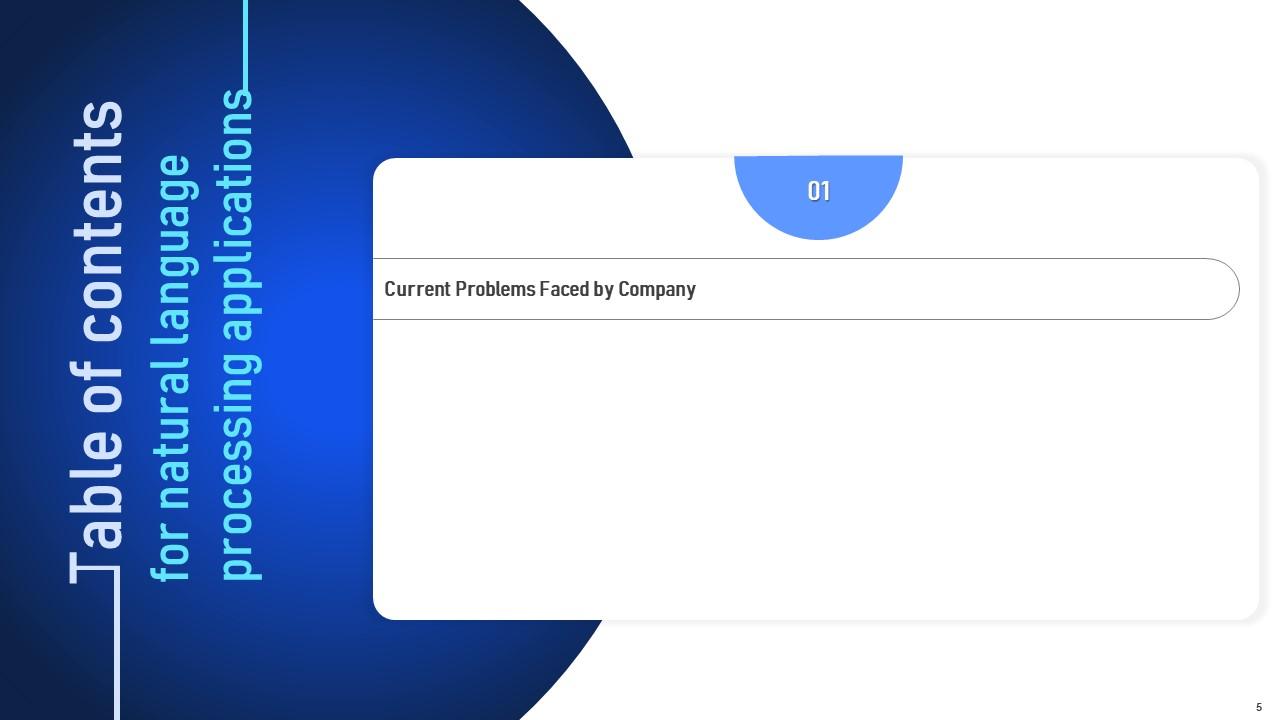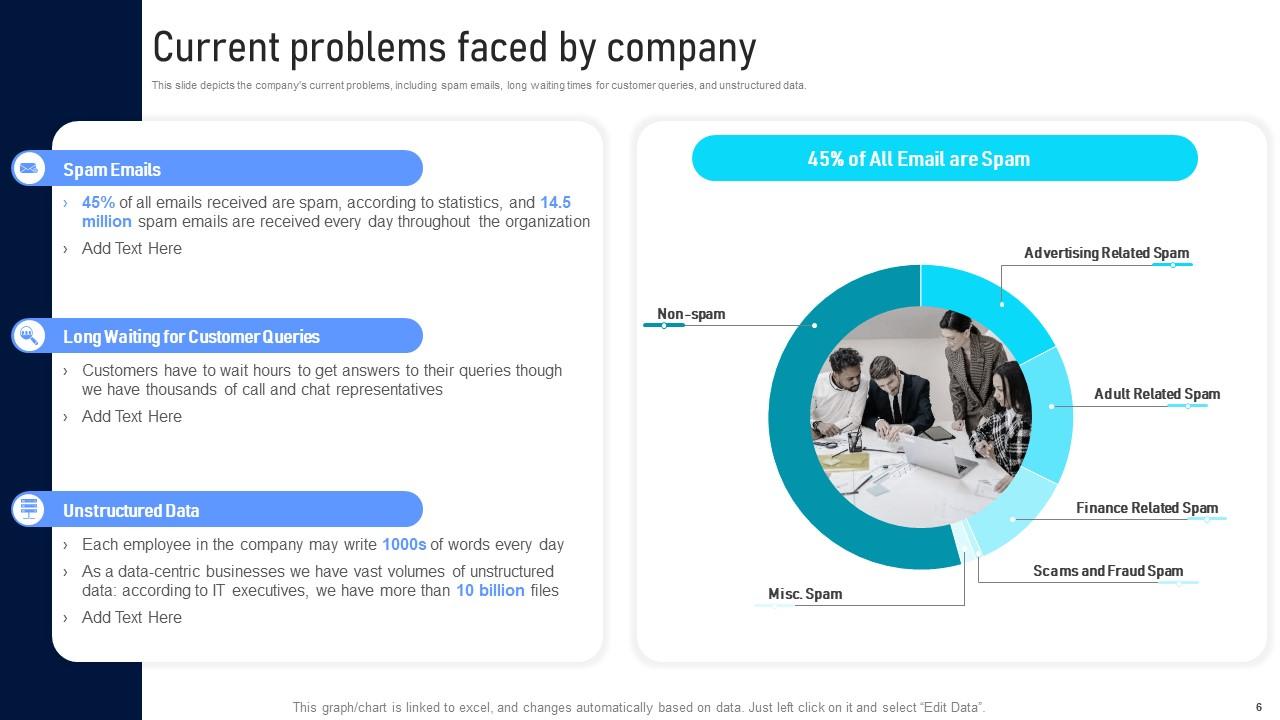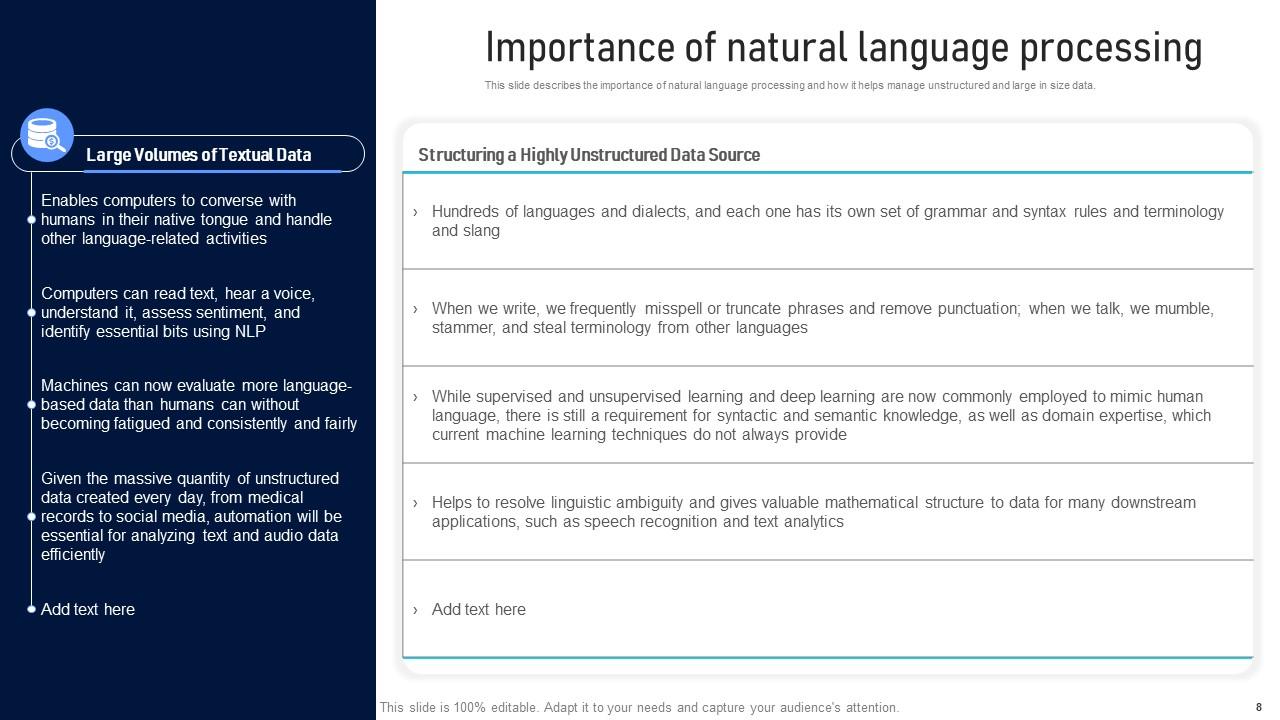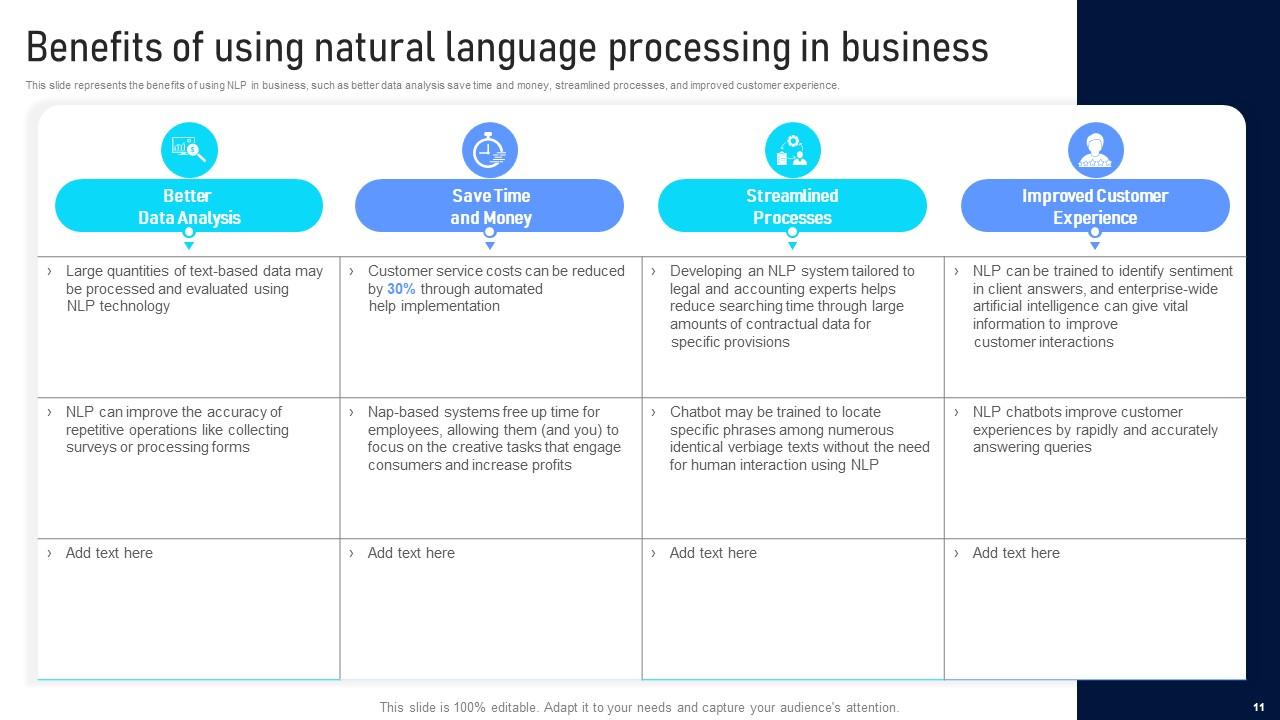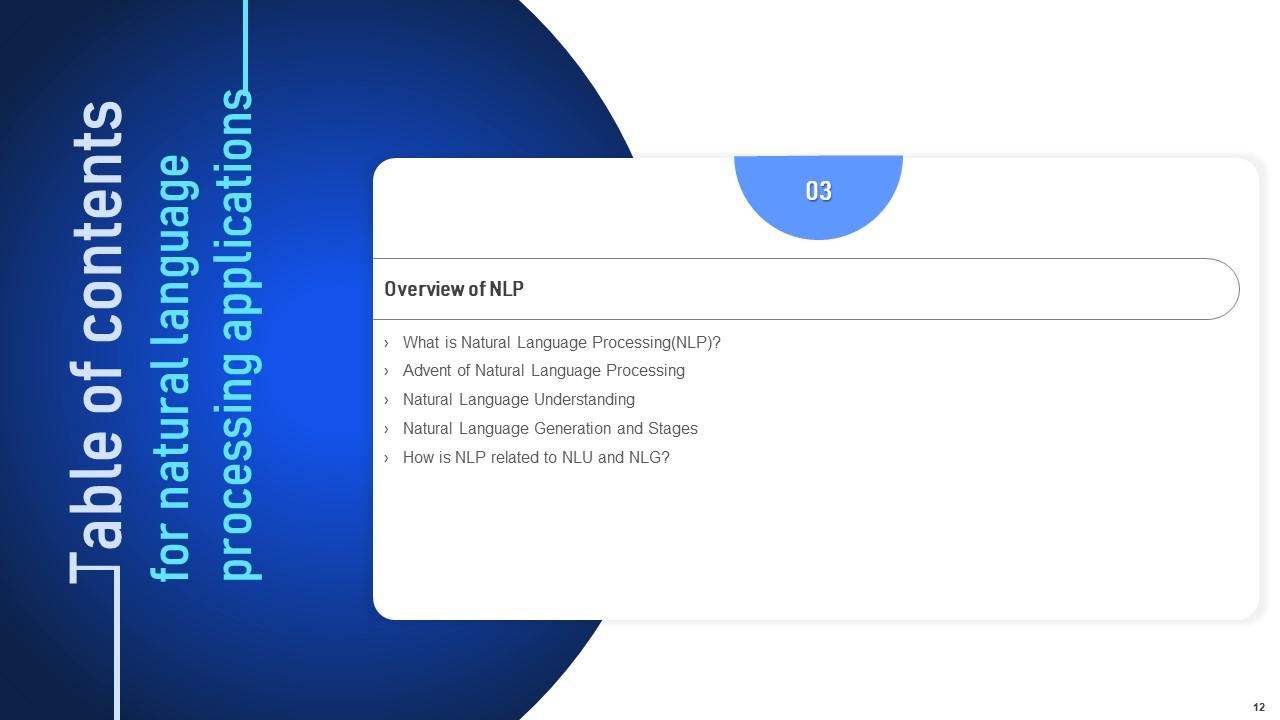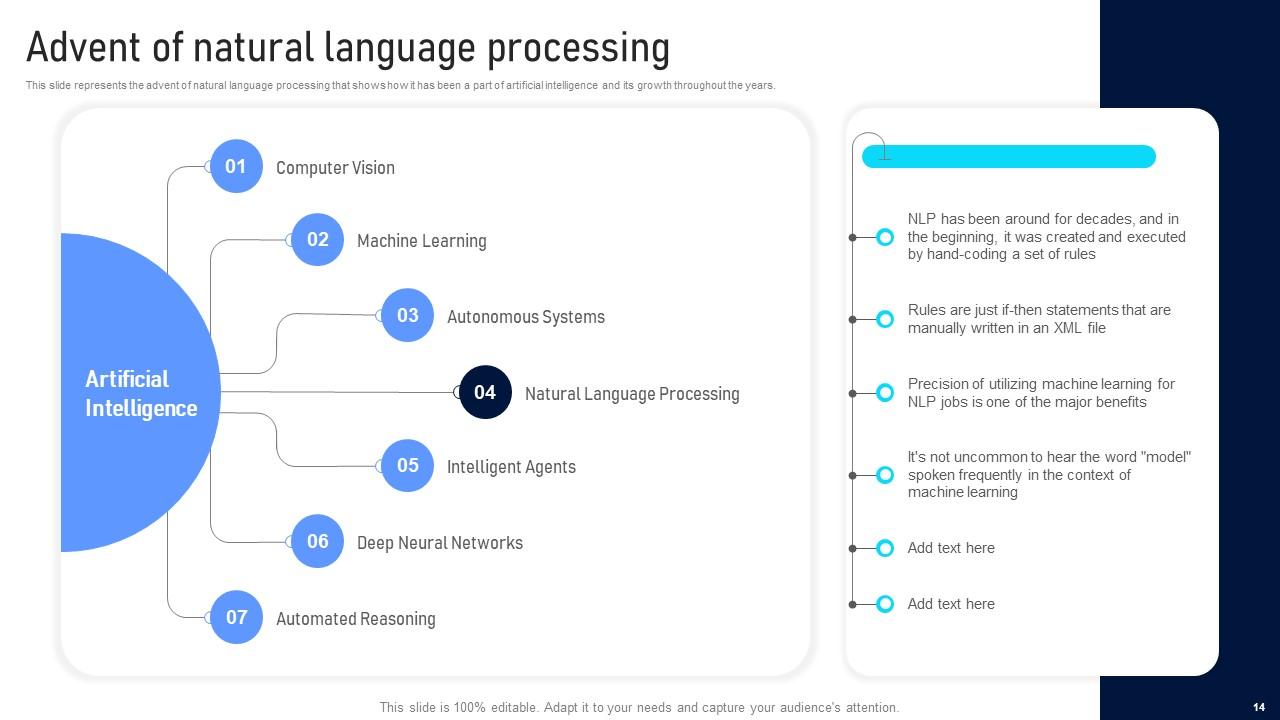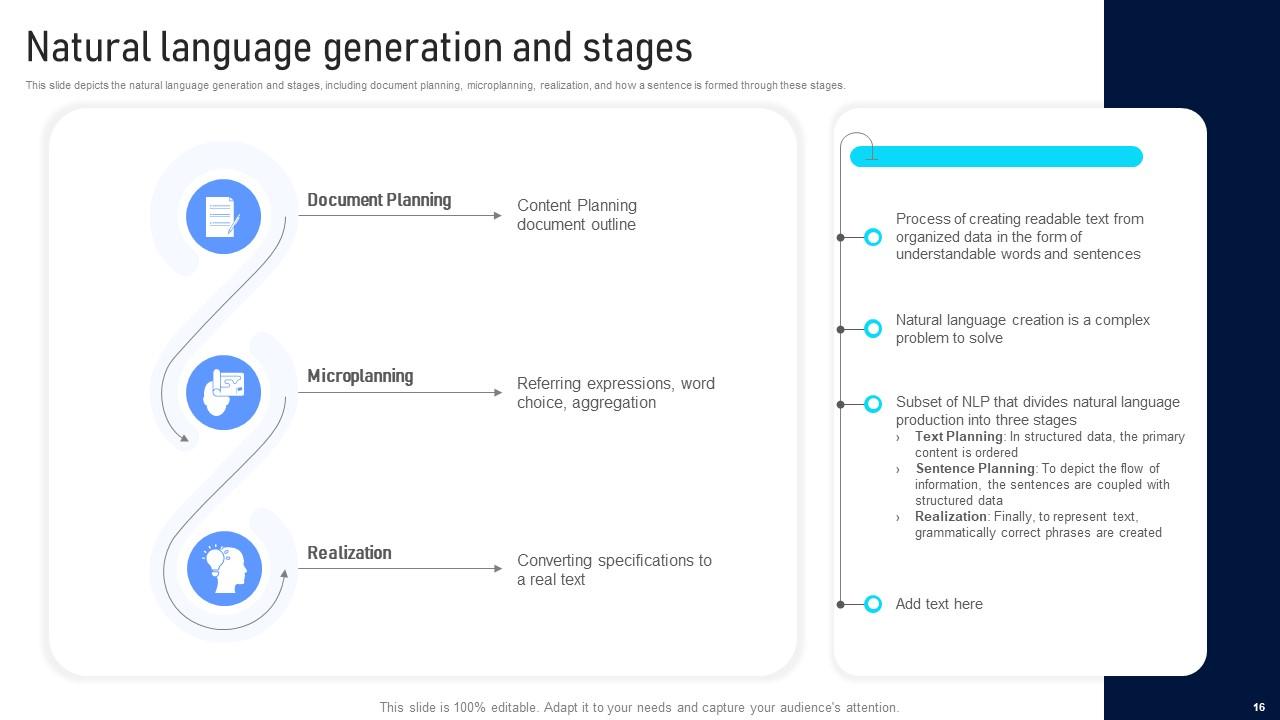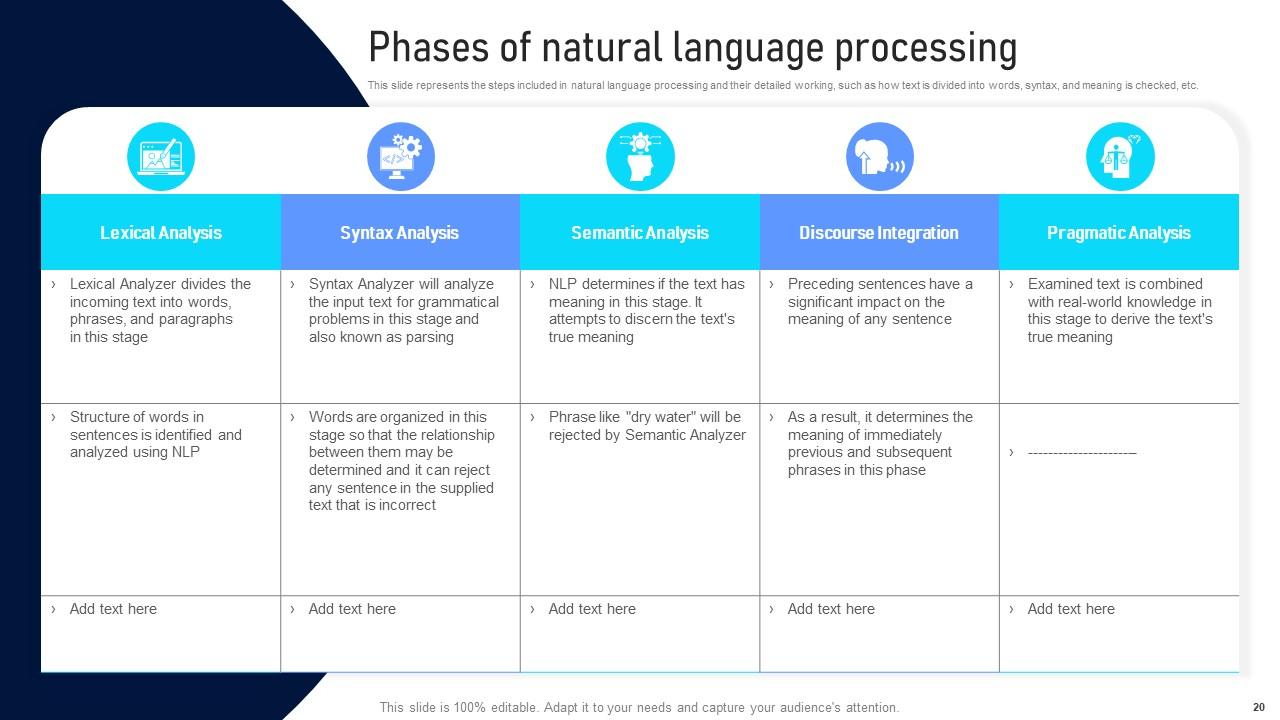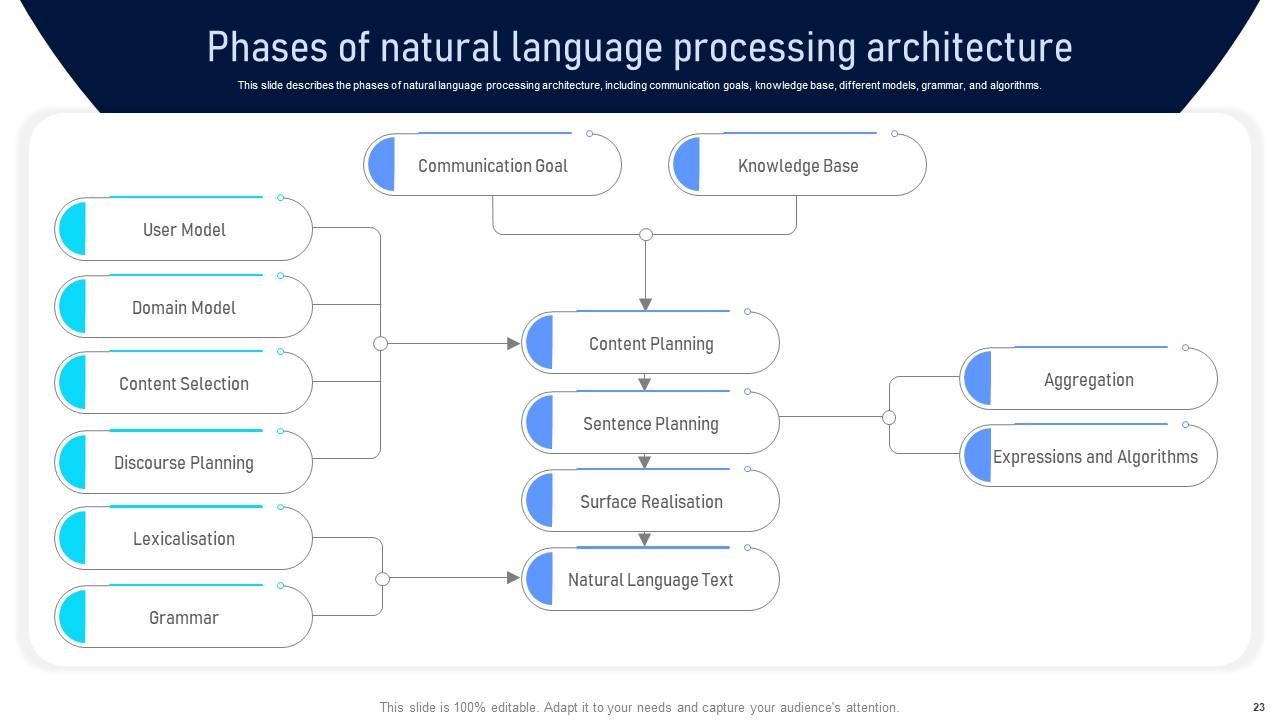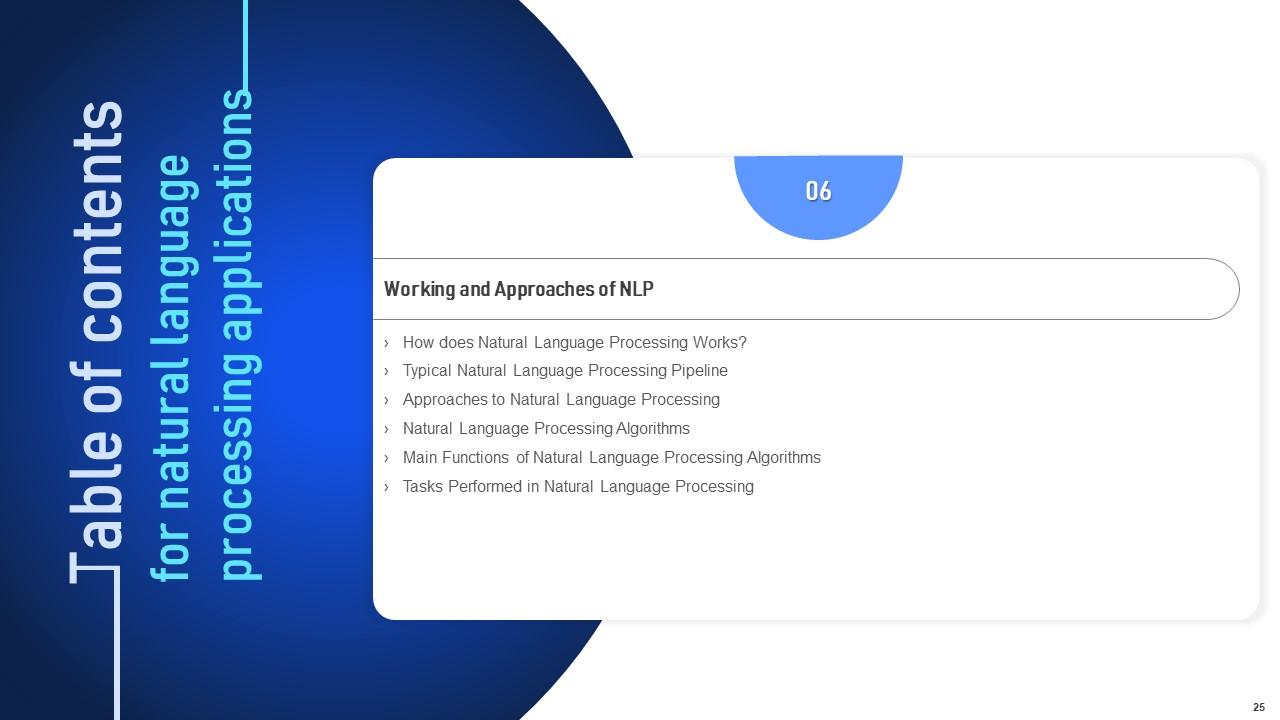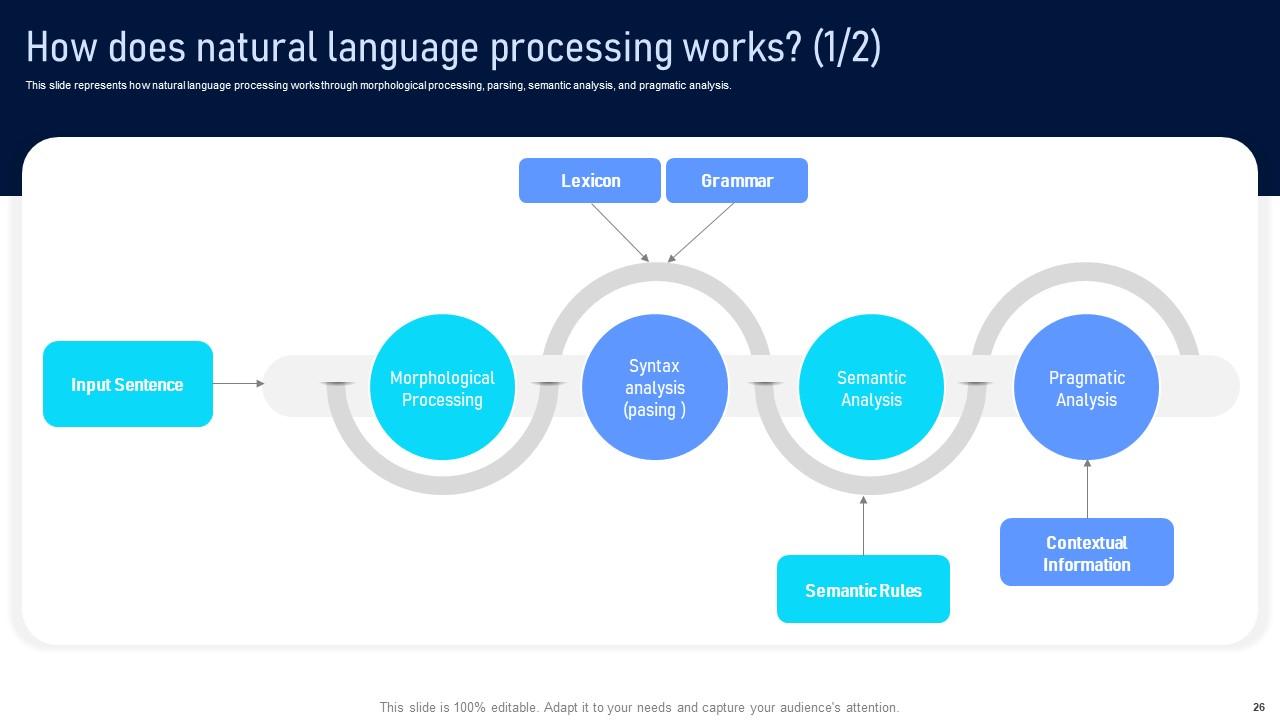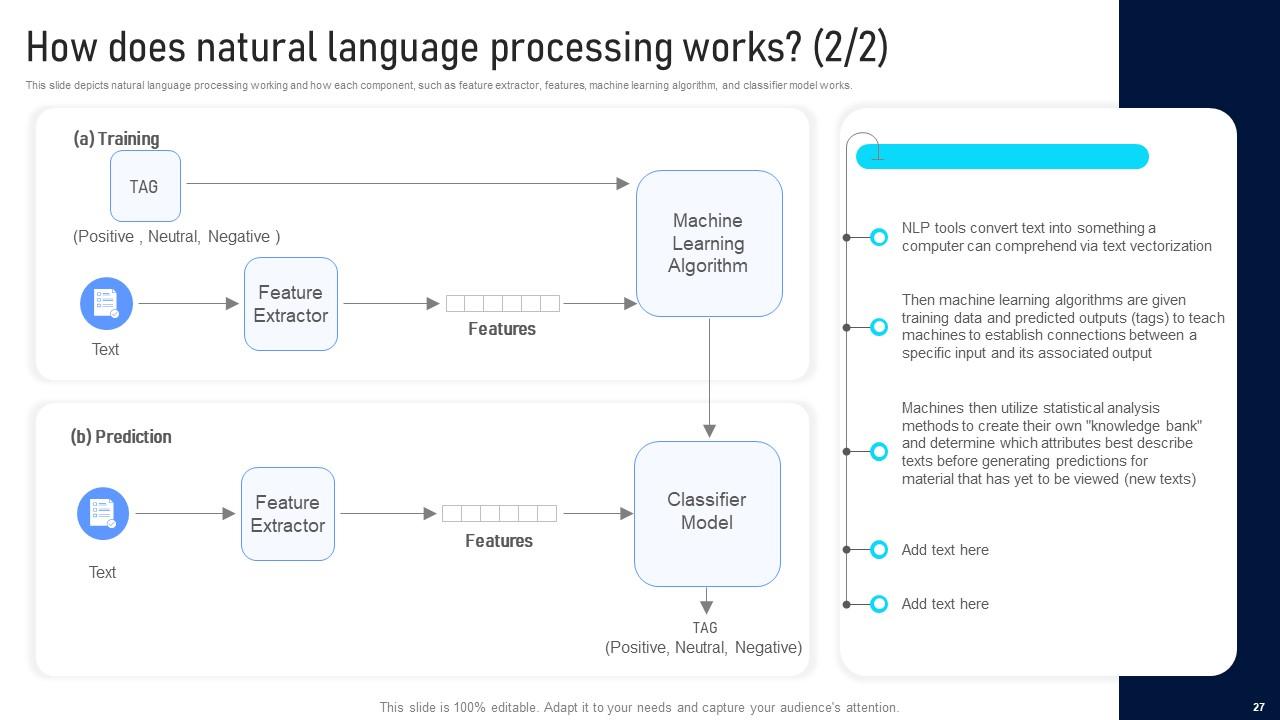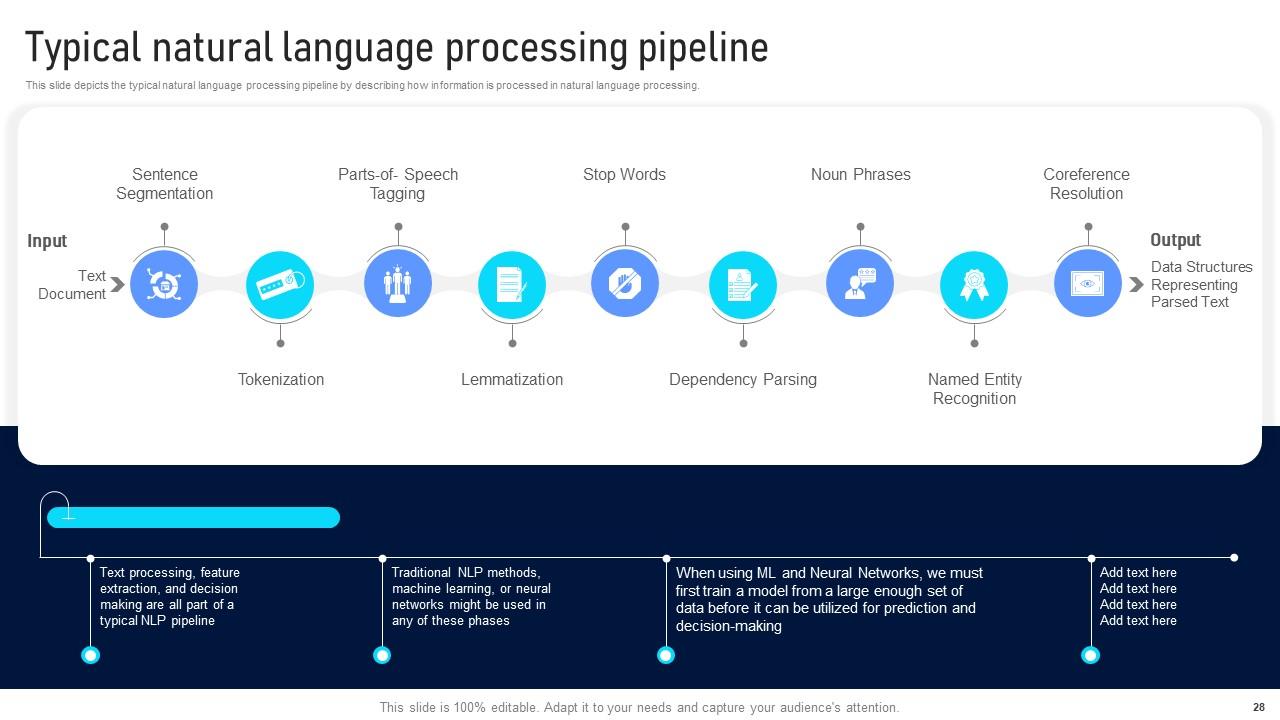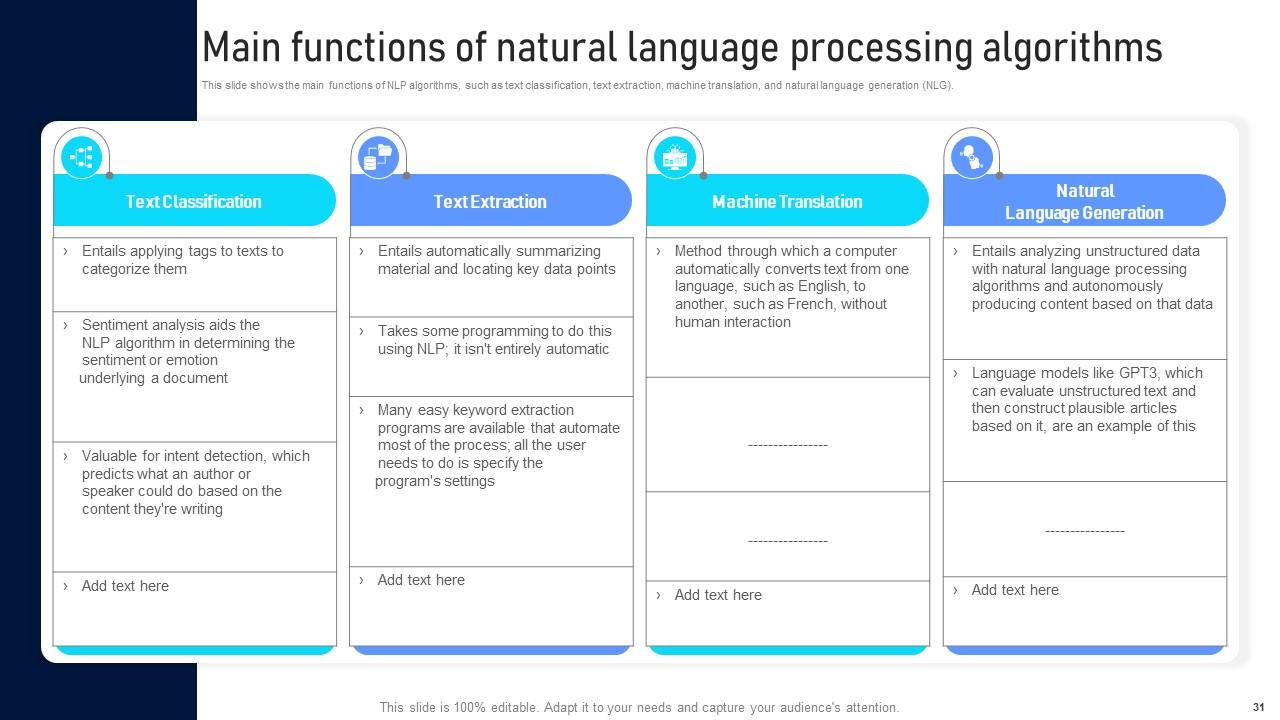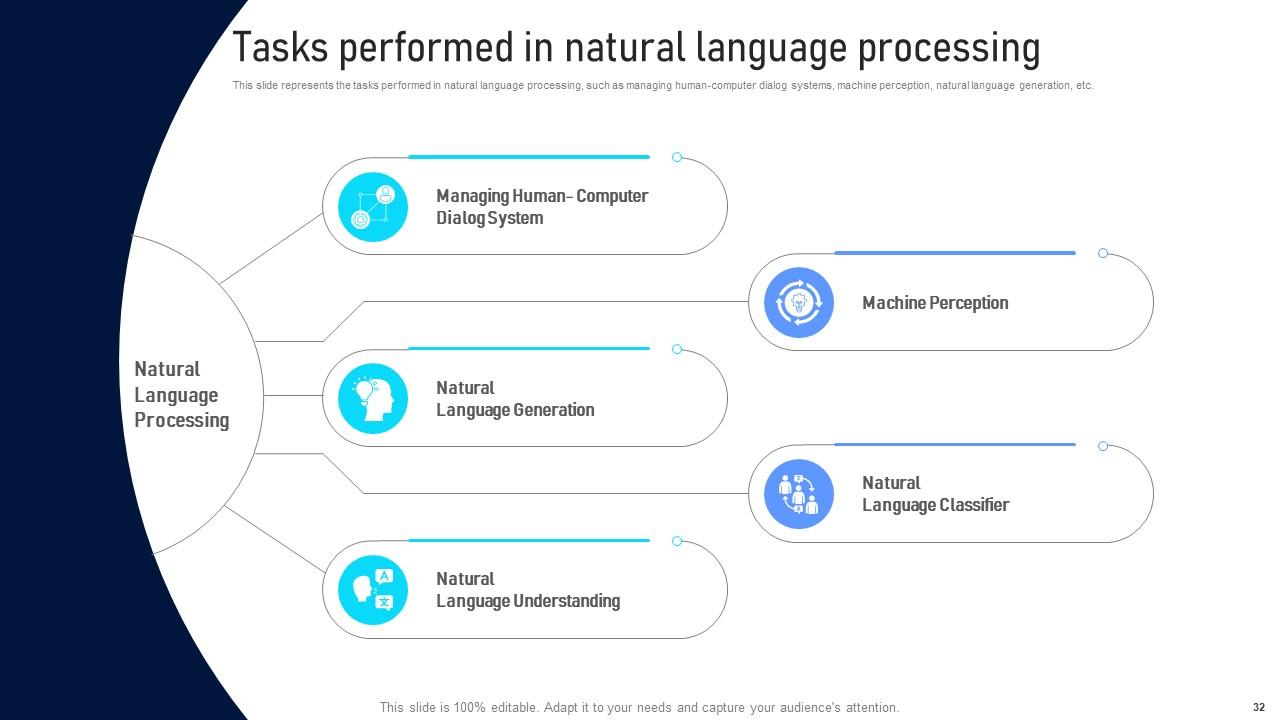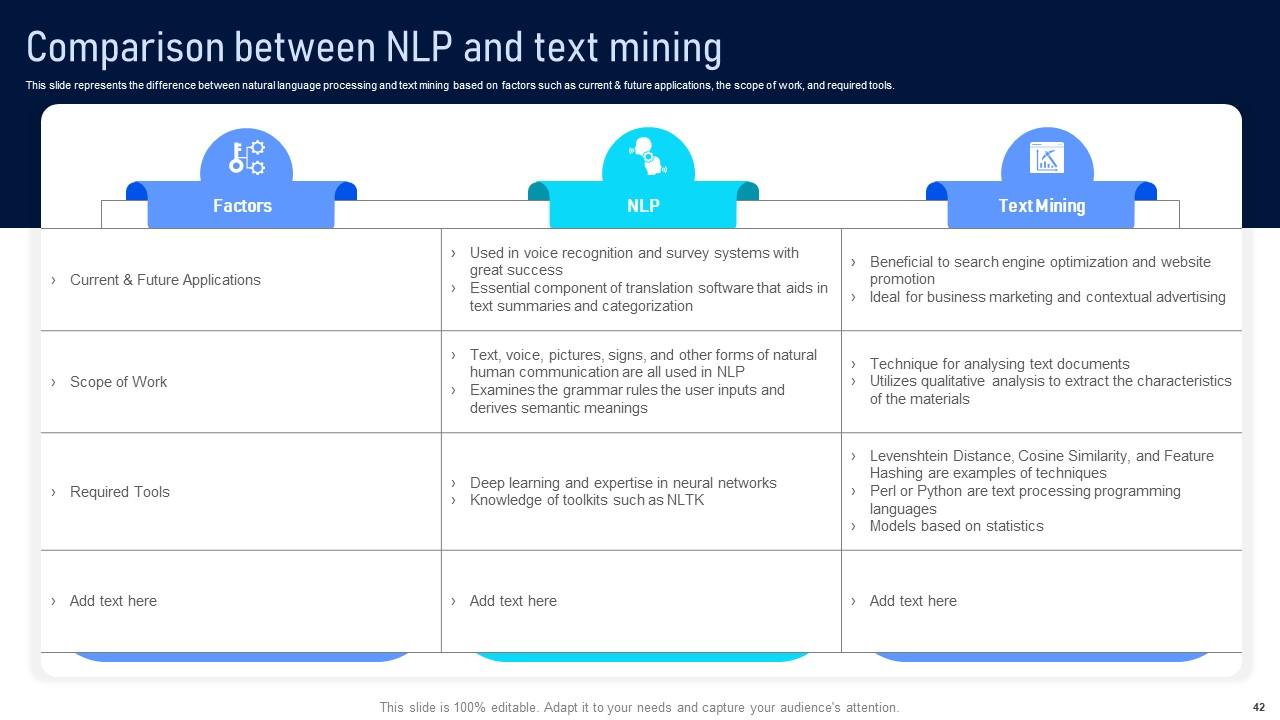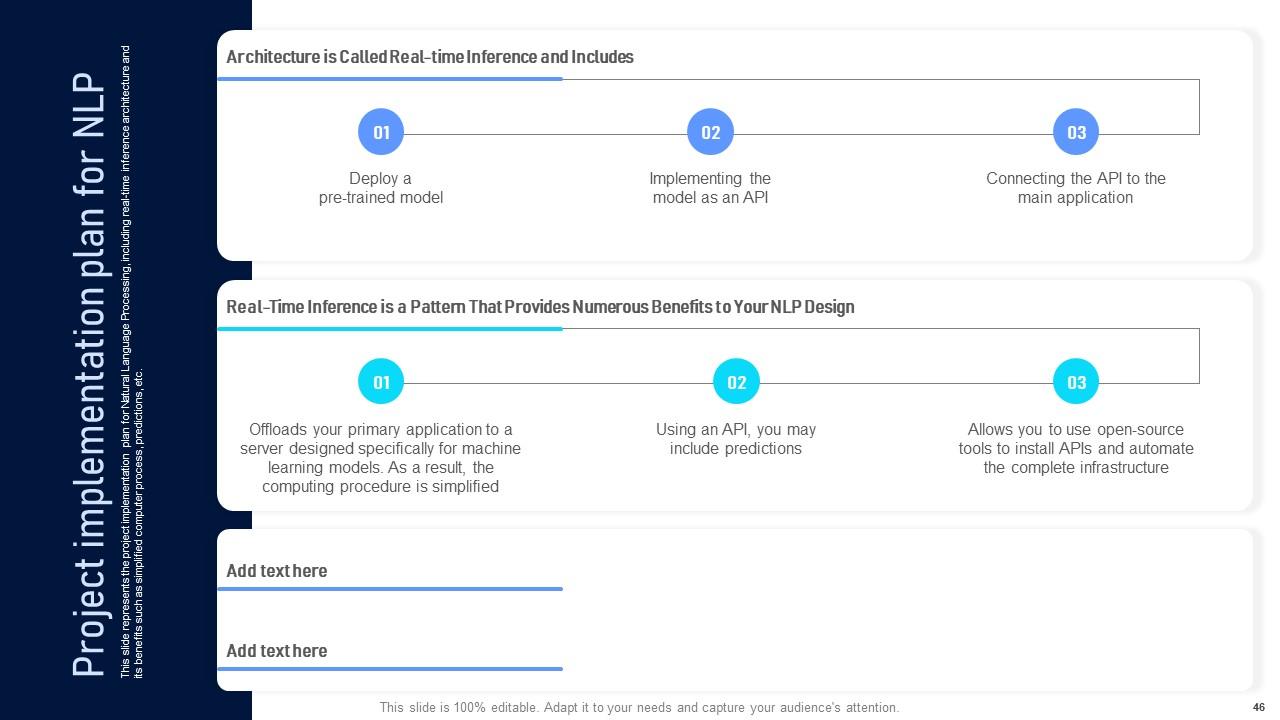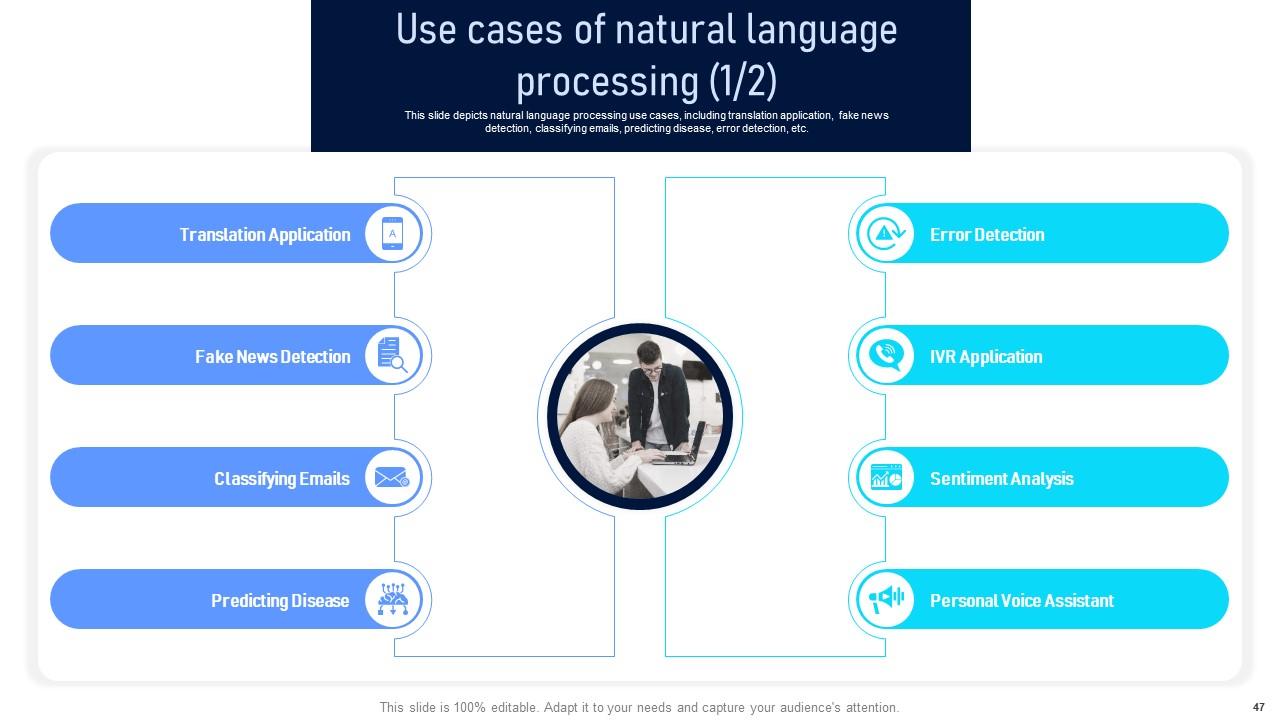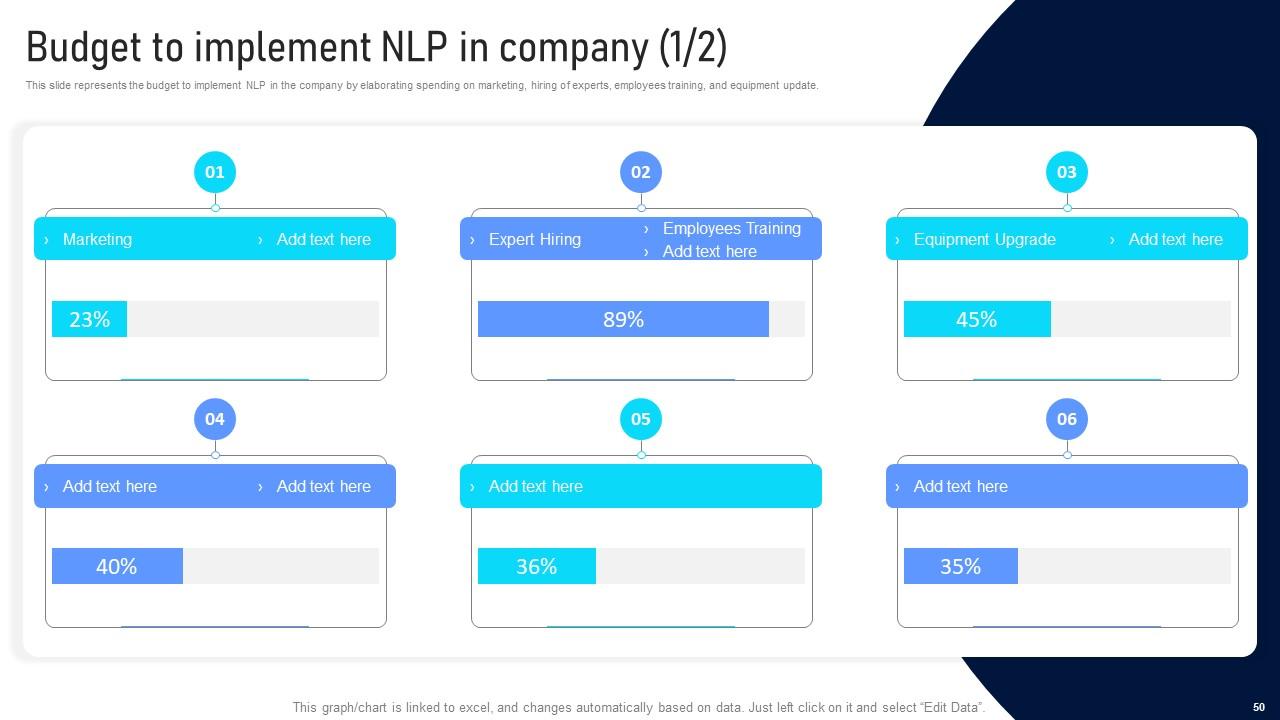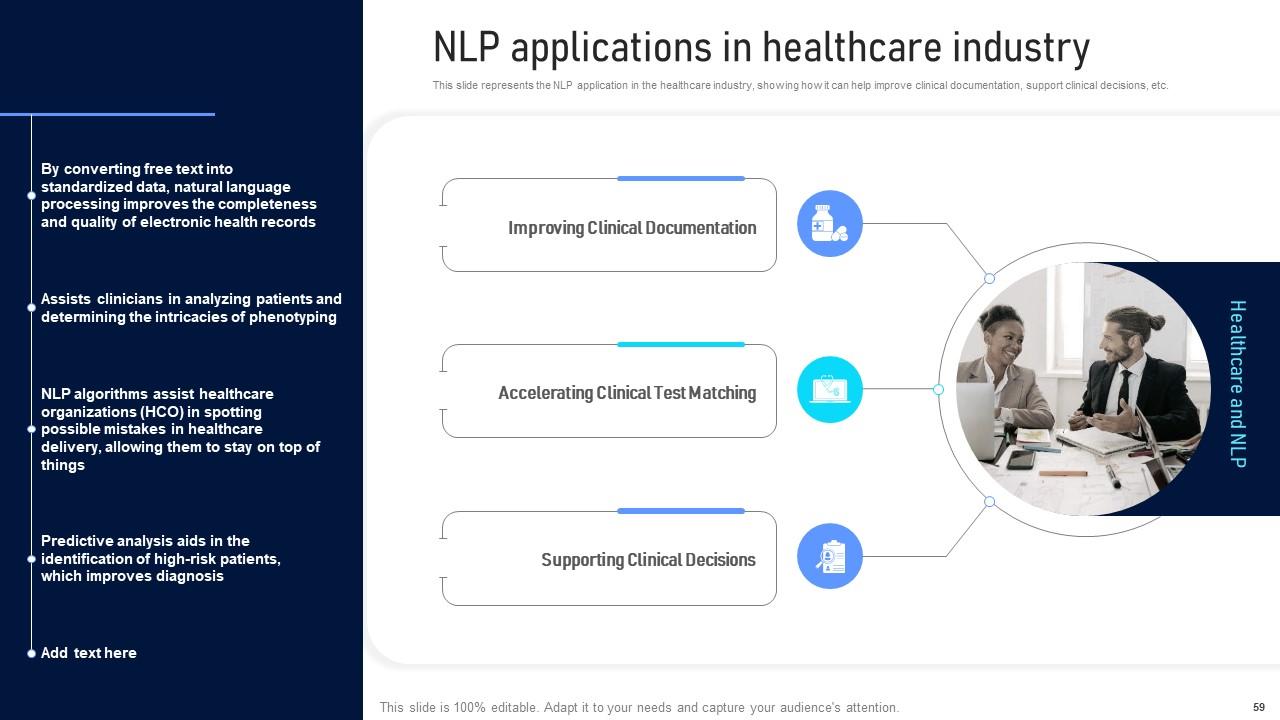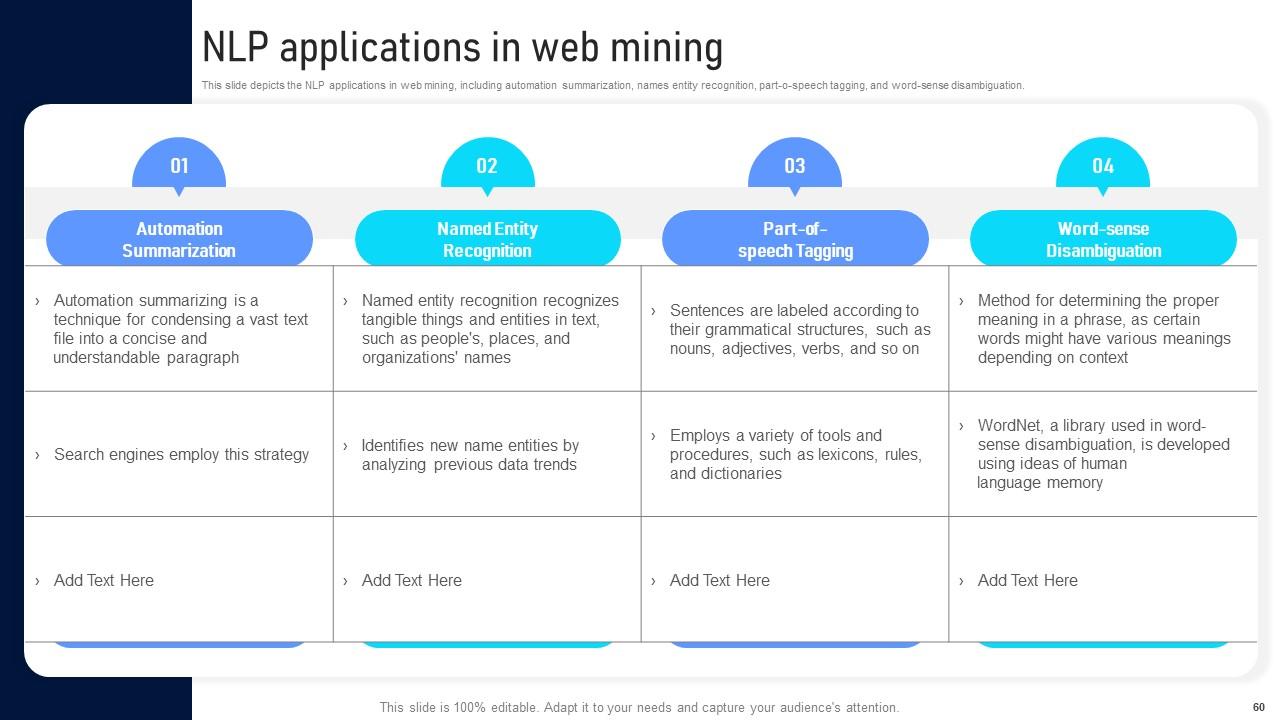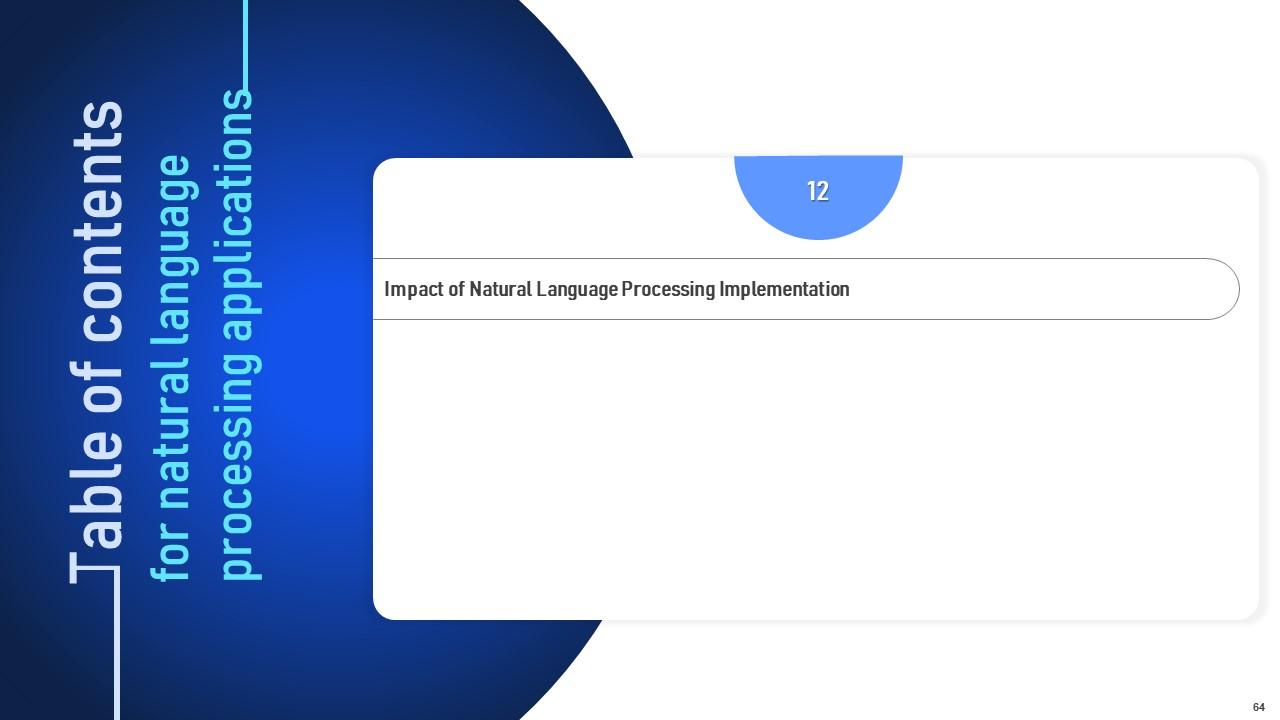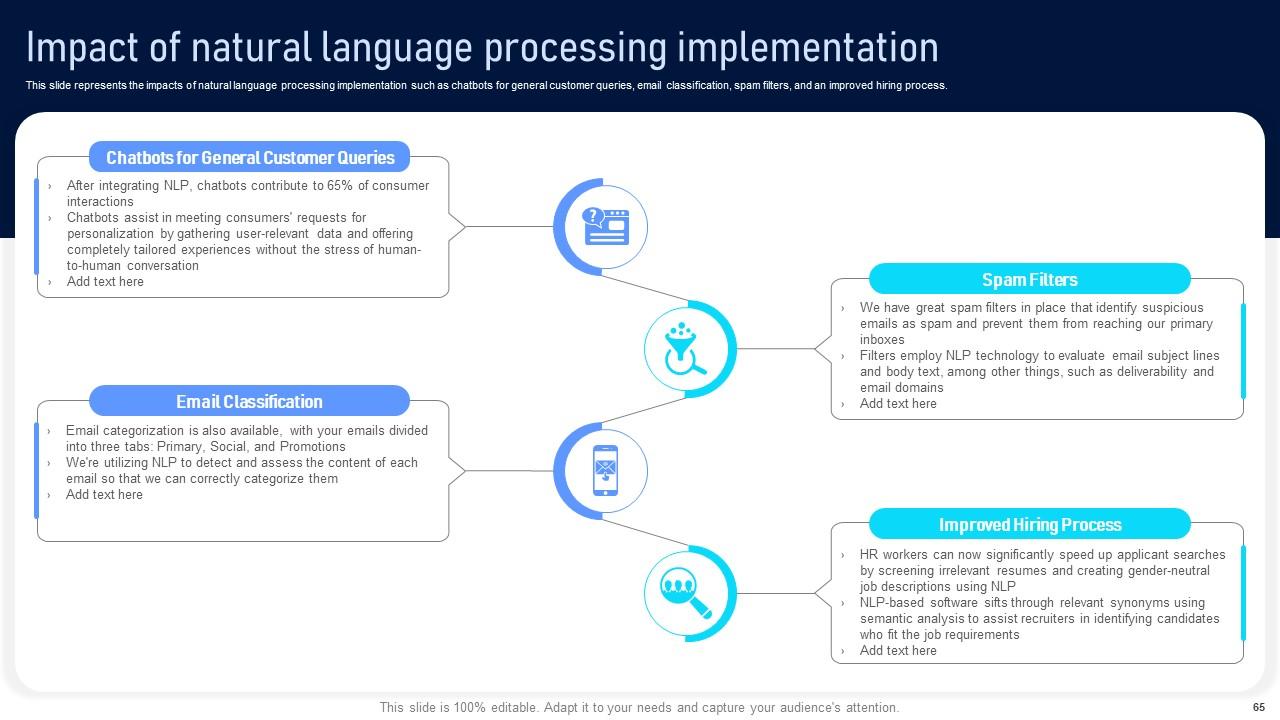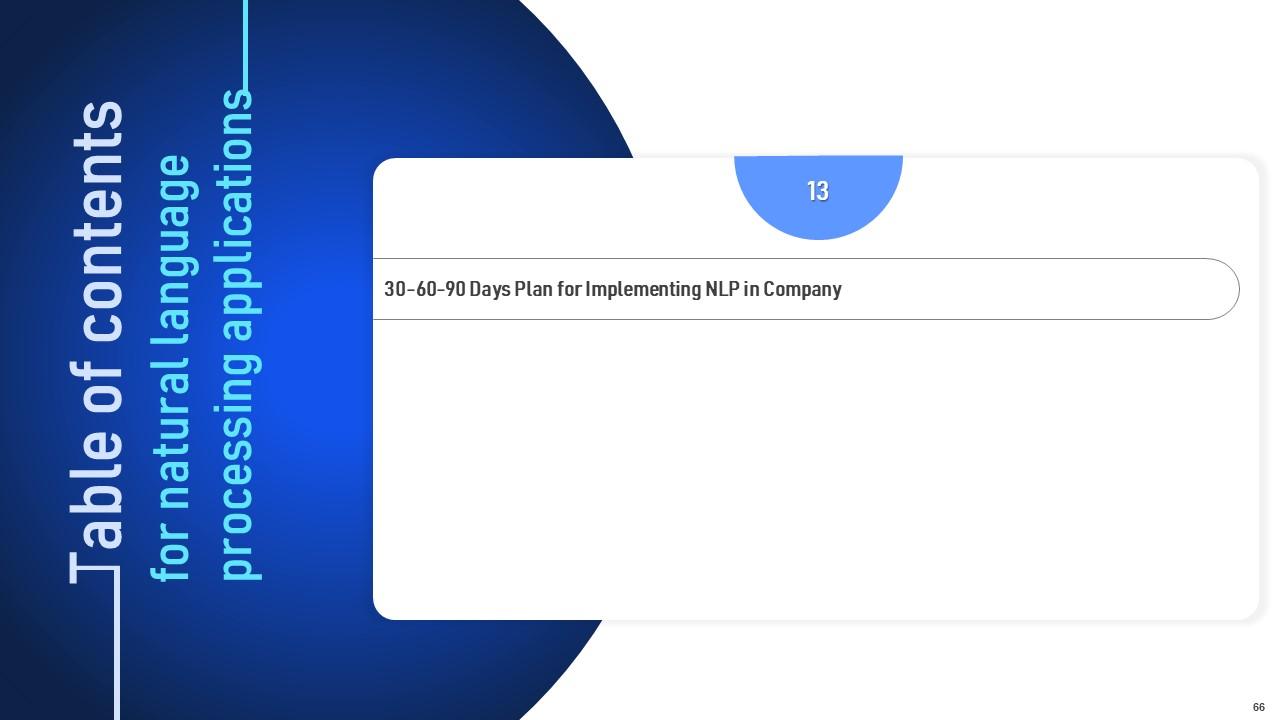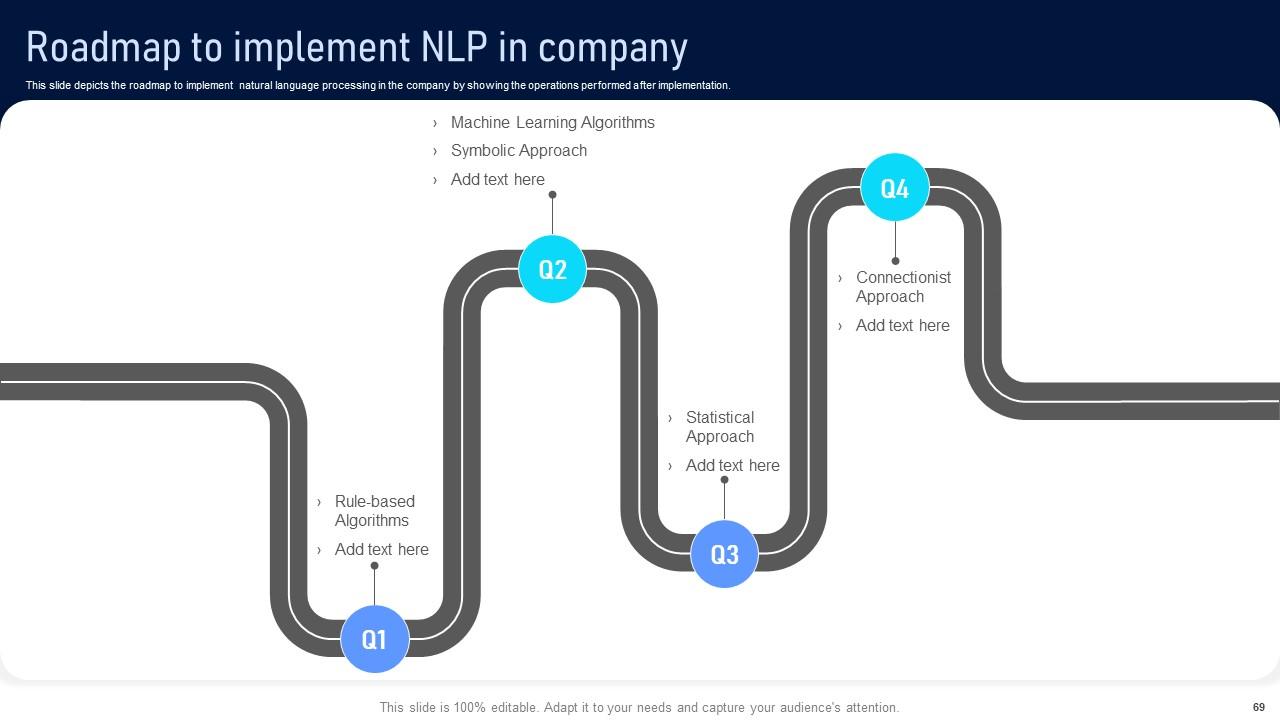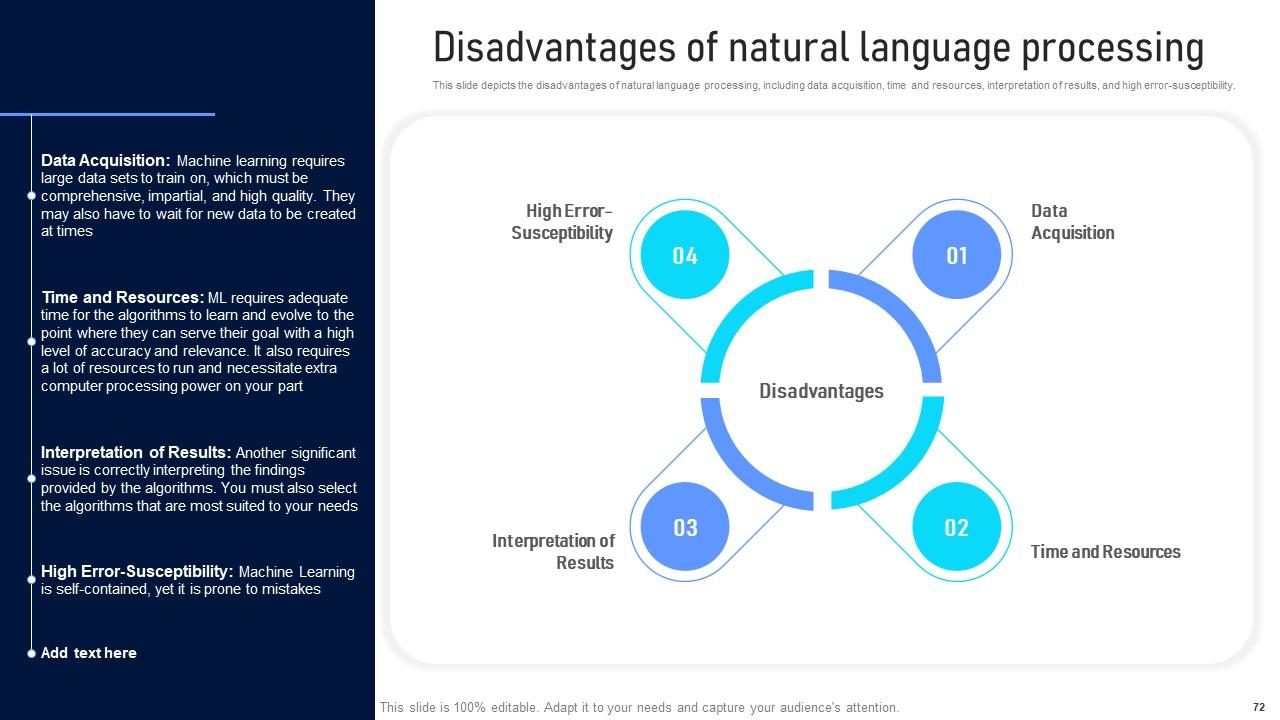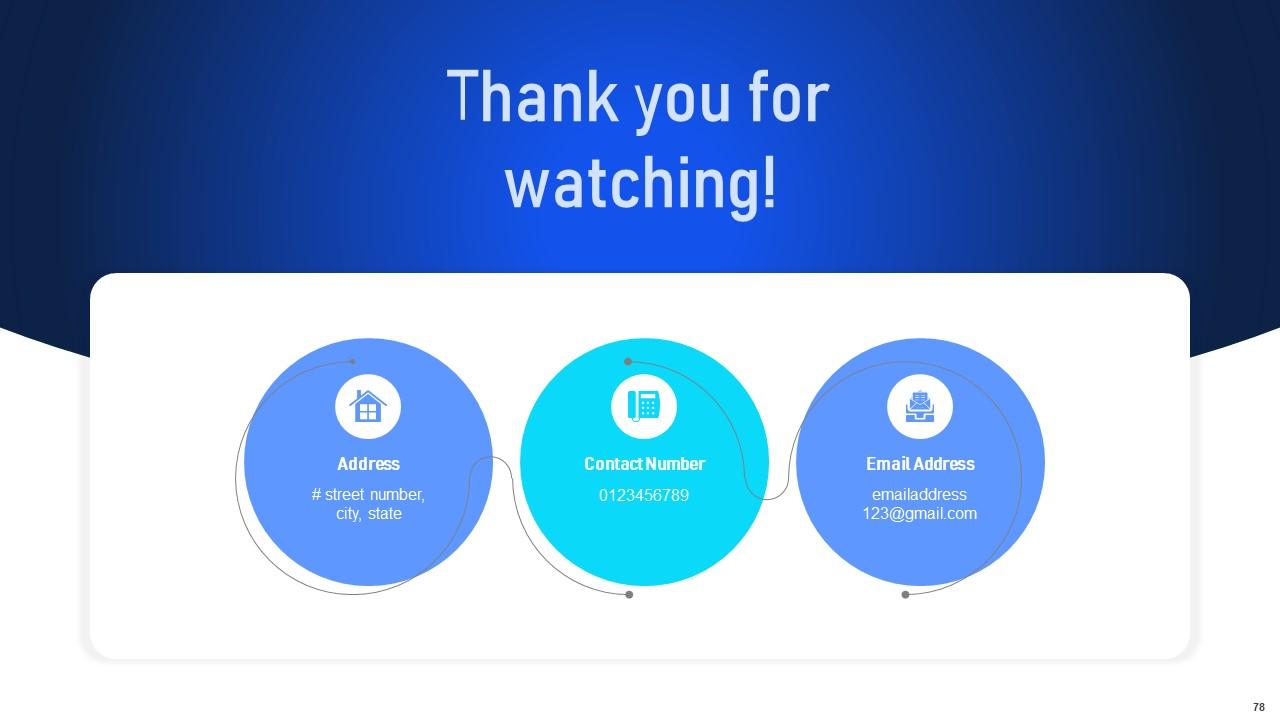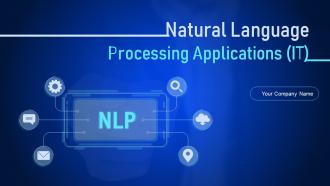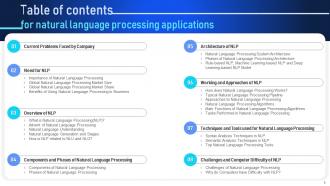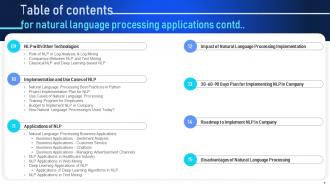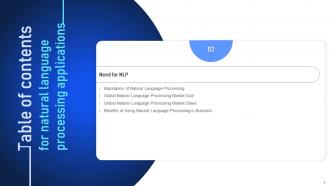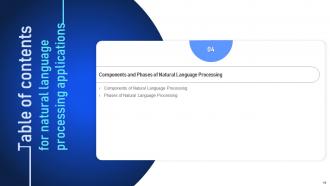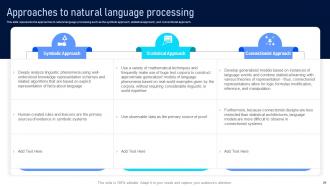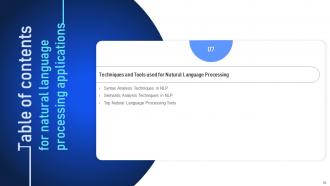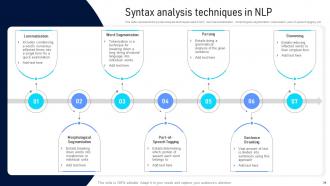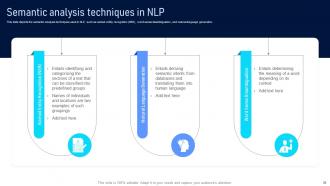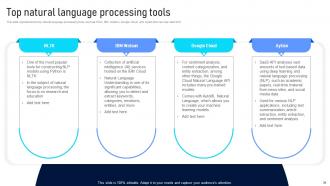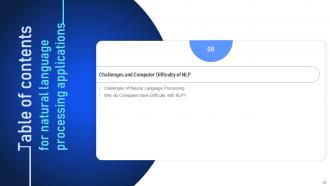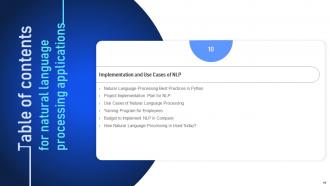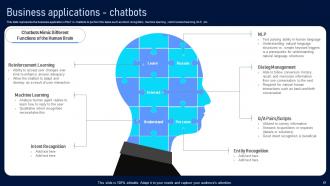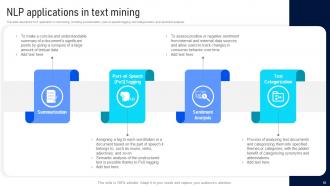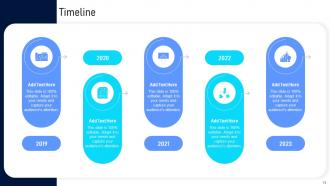Natural Language Processing Applications IT Powerpoint Presentation Slides
Natural language processing NLP is a field of computer science notably, a branch of AI concerning the capacity of computers to interpret text and spoken words in the same manner that humans can. Check out our competently designed Natural Language Processing Applications template that gives a brief idea about the current business problems. Such as spam emails, and unstructured data, and the benefits of NLP in eliminating these issues. In this PowerPoint Presentation, we have covered the overview of natural language processing, including various approaches, techniques, tools, and works. In addition, this template contains components, phases, architecture, and its challenges and difficulty with computers. Furthermore, this template includes natural language processing with other technologies such as log mining, text mining, and a difference between classical and deep learning based NLP. Moreover, this PPT caters to the implementation of NLP in its application in various sectors such as business, healthcare, web mining, etc. Lastly, this deck comprises the impacts of NLP implementation on business, a 30 60 90 days plan for NLP implementation, and a roadmap. Download this 100 percent editable template and customize it based on your needs now.
You must be logged in to download this presentation.
PowerPoint presentation slides
This complete deck covers various topics and highlights important concepts. It has PPT slides which cater to your business needs. This complete deck presentation emphasizes Natural Language Processing Applications IT Powerpoint Presentation Slides and has templates with professional background images and relevant content. This deck consists of total of seventy eight slides. Our designers have created customizable templates, keeping your convenience in mind. You can edit the color, text and font size with ease. Not just this, you can also add or delete the content if needed. Get access to this fully editable complete presentation by clicking the download button below.
People who downloaded this PowerPoint presentation also viewed the following :
Content of this Powerpoint Presentation
Slide 1: This slide displays the title Natural Language Processing Applications (IT).
Slide 2: This slide displays the title AGENDA.
Slide 3: This slide exhibit table of content.
Slide 4: This slide exhibit table of content.
Slide 5: This slide exhibit table of content- Current Problems Faced by Company
Slide 6: This slide depicts the company's current problems, including spam emails, long waiting times for customer queries, and unstructured data.
Slide 7: This slide exhibit table of content- Need for NLP.
Slide 8: This slide describes the importance of natural language processing and how it helps manage unstructured and large in size data.
Slide 9: This slide depicts the global natural language processing market size from 2019 to 2025.
Slide 10: This slide describes the global natural language processing market share.
Slide 11: This slide represents the benefits of using NLP in business.
Slide 12: This slide exhibit table of content- Overview of NLP.
Slide 13: This slide represents natural language processing and how it takes speech and text as inputs to interact with humans or machines.
Slide 14: This slide represents the advent of natural language processing that shows how it has been a part of artificial intelligence and its growth throughout the years.
Slide 15: This slide represents the natural language understanding in NLP and how it works to address the ambiguities.
Slide 16: This slide depicts the natural language generation and stages.
Slide 17: This slide represents how NLP relates to natural language understanding and natural language generation.
Slide 18: This slide exhibit table of content- Components and Phases of Natural Language Processing
Slide 19: This slide describes the working of NLP, including lexical analysis, syntax analysis, semantic analysis, discourse analysis, and pragmatic analysis.
Slide 20: This slide represents the steps included in natural language processing and their detailed working.
Slide 21: This slide exhibit table of content- Architecture of NLP
Slide 22: This slide represents the natural language processing system architecture and how it works to respond to given commands or instructions by the user.
Slide 23: This slide describes the phases of natural language processing architecture, including communication goals, knowledge base, different models, grammar, and algorithms.
Slide 24: This slide depicts the rule-based NLP model, machine learning-based NLP model, and deep learning-based natural language processing model.
Slide 25: This slide exhibit table of content- Working and Approaches of NLP
Slide 26: This slide represents how natural language processing works through morphological processing, parsing, semantic analysis, and pragmatic analysis.
Slide 27: This slide depicts natural language processing working and how each component.
Slide 28: This slide depicts the typical natural language processing pipeline by describing how information is processed in natural language processing.
Slide 29: This slide represents the approaches to natural language processing such as the symbolic approach, statistical approach, and connectionist approach.
Slide 30: This slide represents the natural language processing algorithms such as rule-based algorithms and machine learning algorithms.
Slide 31: This slide shows the main functions of NLP algorithms.
Slide 32: This slide represents the tasks performed in natural language processing.
Slide 33: This slide exhibit table of content- Techniques and Tools used for Natural Language Processing
Slide 34: This slide represents the syntax analysis techniques used in NLP, such as lemmatization, morphological segmentation, tokenization, part-of-speech tagging, etc.
Slide 35: This slide depicts the semantic analysis techniques used in NLP, such as named entity recognition (NER), word sense disambiguation, and natural language generation.
Slide 36: This slide represents the top natural language processing tools, such as NTLK, IBM Watson, Google Cloud, and Aylien that can help start NLP.
Slide 37: This slide exhibit table of content- Challenges and Computer Difficulty of NLP
Slide 38: This slide describes the challenges of natural language processing such as precision, tone of voice and inflection, and evolving use of language.
Slide 39: This slide represents the reasons why do computers have difficulty with natural language processing, such as unstructured data, grammar syntax, etc.
Slide 40: This slide exhibit table of content- NLP with Other Technologies
Slide 41: This slide represents the role of NLP in log analysis & log mining.
Slide 42: This slide represents the difference between natural language processing and text mining based on factors.
Slide 43: This slide represents the classical NLP and deep learning-based NLP and how operations are carried out in both approaches, such as symbolic and statical approaches.
Slide 44: This slide exhibit table of content- Implementation and Use Cases of NLP
Slide 45: This slide depicts the natural language processing best practices in python.
Slide 46: This slide represents the project implementation plan for Natural Language Processing.
Slide 47: This slide depicts natural language processing use cases.
Slide 48: This slide depicts the use cases of NLP, including the Google translator, voice recognition assistants.
Slide 49: This slide depicts the training program for employees.
Slide 50: This slide represents the budget to implement NLP in the company by elaborating spending on marketing, hiring of experts, employees training, and equipment update.
Slide 51: This slide depicts the detailed budget report to implement natural language processing in the company by showing the US dollars from January to September.
Slide 52: This slide shows how natural language processing is used in today’s world in voice command services.
Slide 53: This slide exhibit table of content- Applications of NLP
Slide 54: This slide represents the natural language processing applications in different sectors such as business, text mining, deep learning, healthcare, and web mining.
Slide 55: This slide represents the sentiment analysis in NLP business applications and how online generated data is interpreted by NLP to generate useful insights.
Slide 56: This slide represents the business application of NLP in customer service by automating customer support tasks and automatically analyzing customer feedback.
Slide 57: This slide represents the business application of NLP in chatbots to perform the tasks.
Slide 58: This slide represents the business application of NLP to manage advertisement channels and shows the total spending by marketers in AI to target consumers, etc.
Slide 59: This slide represents the NLP application in the healthcare industry, showing how it can help improve clinical documentation, support clinical decisions, etc.
Slide 60: This slide depicts the NLP applications in web mining, including automation summarization, names entity recognition.
Slide 61: This slide represents the deep learning applications of NLP, including machine translation, language modeling, caption generation, and question answering.
Slide 62: This slide shows the applications of deep learning algorithms.
Slide 63: This slide depicts the NLP application in text mining.
Slide 64: This slide exhibit table of content- Impact of Natural Language Processing Implementation
Slide 65: This slide represents the impacts of natural language processing implementation.
Slide 66: This slide exhibit table of content- 30-60-90 Days Plan for Implementing NLP in Company.
Slide 67: This slide represents the 30-60-90 days plan to implement natural language processing in the company.
Slide 68: This slide exhibit table of content- Roadmap to Implement NLP in Company.
Slide 69: This slide depicts the roadmap to implement natural language processing in the company by showing the operations performed after implementation.
Slide 70: This is the icons slide.
Slide 71: This slide presents title for additional slides.
Slide 72: This slide depicts the disadvantages of natural language processing.
Slide 73: This slide exhibit Timeline.
Slide 74: This slide presents your company's vision, mission and goals.
Slide 75: This slide exhibits yearly profits stacked line charts for different products.
Slide 76: This slide display Our target.
Slide 77: This slide depicts posts for past experiences of clients.
Slide 78: This is thank you slide & contains contact details of company like office address, phone no., etc.
Natural Language Processing Applications IT Powerpoint Presentation Slides with all 83 slides:
Use our Natural Language Processing Applications IT Powerpoint Presentation Slides to effectively help you save your valuable time. They are readymade to fit into any presentation structure.
FAQs
Natural Language Processing (NLP) is a subfield of Artificial Intelligence (AI) that enables machines to interact with humans using natural language. It helps manage unstructured and large in size data, including text, audio, and images, by providing automated solutions that extract meaning and insights from these data sources.
NLP can provide several benefits to businesses, such as automating repetitive tasks, extracting valuable insights from unstructured data, improving customer experience, and enhancing decision-making capabilities. It can also help in tasks such as customer support, data analysis, sentiment analysis, chatbots, and voice recognition systems.
The phases of Natural Language Processing architecture include communication goals, knowledge base, different models, grammar, and algorithms. These phases work together to enable machines to interact with humans using natural language.
Some of the top Natural Language Processing tools are NTLK (Natural Language Toolkit), IBM Watson, Google Cloud, and Aylien. These tools provide various functionalities, such as tokenization, part-of-speech tagging, named entity recognition, and sentiment analysis.
NLP has various business applications, including sentiment analysis, customer service automation, chatbots, voice recognition systems, and text mining. It can help automate customer support tasks, extract valuable insights from unstructured data, and improve decision-making capabilities.
-
SlideTeam has helped me take my presentation to the next level. Everyone at the office is impressed! I’ll be using their designs for a long-long time.
-
Satisfied with the way SlideTeam resolved my query regarding the right business PPTs that I was having difficulty finding. I found the perfect match with their assistance.



